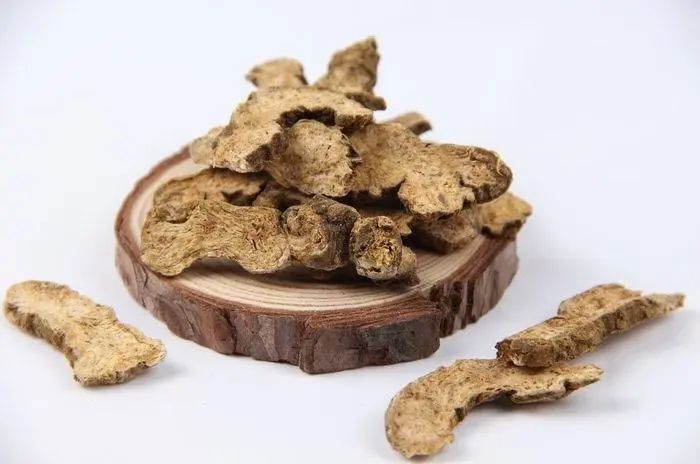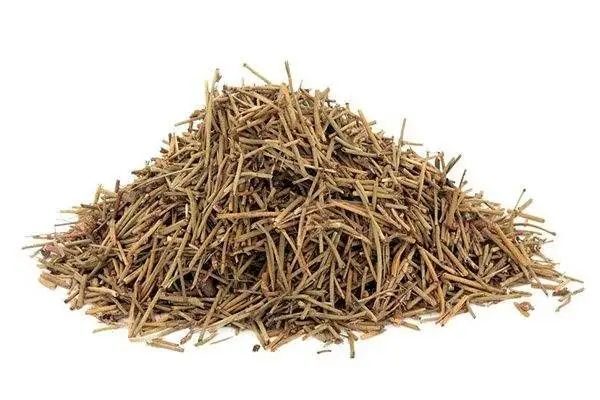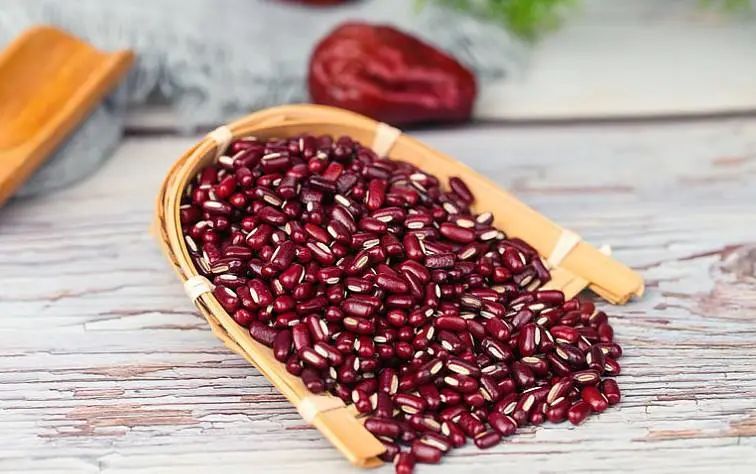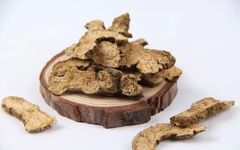“Among the six qi, damp-heat is a disease that affects eight or nine out of ten people.” From ancient times to the present, damp-heat has always been our “great concern.” Heavy breath, lack of appetite; oily skin all day, prone to rashes; oily hair within a day after washing; irritable temperament; excessive leukorrhea in women, excessive scrotal moisture in men… these are all signals of excess damp-heat in the body. Here, we present the experience of Master Li Shimao in treating damp-heat syndrome for the benefit of colleagues.

▲ Li Shimao, Master of Traditional Chinese Medicine (1936-2015)
Li Shimao, the second Master of Traditional Chinese Medicine, served as a professor and doctoral supervisor at Hebei University of Chinese Medicine, and was a guiding teacher for the academic experience inheritance of national old TCM experts in the second, third, fourth, and fifth batches. Master Li Shimao practiced medicine for over 50 years, focusing on pulse diagnosis and integrating the four examinations for syndrome differentiation and treatment, particularly excelling in the treatment of difficult internal diseases, chronic illnesses, and stubborn syndromes.
Damp-heat, is a common clinical syndrome. Professor Li Shimao has unique insights and methods for treating this syndrome. Damp-heat syndrome can arise from both external pathogens and internal injuries, with the distinction being that internal damp-heat is primarily due to internal dampness, has a slow onset, and rarely presents with typical external cold-heat symptoms; the course of the disease can last for years without resolution. External damp-heat is often triggered by external pathogens, generally accompanied by internal dampness, has a relatively rapid onset, and a short course, initially presenting with external cold-heat symptoms.External damp-heat syndrome is not unique to warm diseases; it can also occur in cold damage. For example, in cold damage, there are formulas such as Bai Hu Jia Cang Zhu Tang, Yin Chen Hao Tang, Bai Tou Weng Tang, Zhi Zi Bai Pi Tang, and Yin Chen Wu Ling San. ▲ Cang Zhu (Atractylodes)Based on the affected areas, damp-heat can invade the zang-fu organs and meridians. When it invades the zang-fu, it can manifest as: spleen-stomach damp-heat, liver-gallbladder damp-heat, large intestine damp-heat, bladder damp-heat, damp-heat descending to the small intestine, damp-heat diffusing through the three jiao, and dampness obstructing the heart. When it invades the meridians, it obstructs the flow of qi.The term damp-heat first appeared in the Huangdi Neijing (Yellow Emperor’s Inner Canon), but it did not provide treatment methods or corresponding formulas. Although the Shanghan Lun (Treatise on Cold Damage) discusses the pathogenesis of damp-heat and includes corresponding formulas, it does not explicitly name it. The term damp-heat truly became a syndrome type through the differentiation process of later physicians.In discussing warm diseases, Professor Li Shimao simplified the types of warm diseases into two main categories: warm-heat and damp-heat, making it simple and practical, and established three major treatment principles for warm diseases: “clearing, penetrating, and nourishing.”For damp-heat syndromes outside of warm diseases, one can also refer to the major treatment principles proposed by Professor Li Shimao, which are also to clear heat, penetrate heat, and promote dampness resolution.
▲ Cang Zhu (Atractylodes)Based on the affected areas, damp-heat can invade the zang-fu organs and meridians. When it invades the zang-fu, it can manifest as: spleen-stomach damp-heat, liver-gallbladder damp-heat, large intestine damp-heat, bladder damp-heat, damp-heat descending to the small intestine, damp-heat diffusing through the three jiao, and dampness obstructing the heart. When it invades the meridians, it obstructs the flow of qi.The term damp-heat first appeared in the Huangdi Neijing (Yellow Emperor’s Inner Canon), but it did not provide treatment methods or corresponding formulas. Although the Shanghan Lun (Treatise on Cold Damage) discusses the pathogenesis of damp-heat and includes corresponding formulas, it does not explicitly name it. The term damp-heat truly became a syndrome type through the differentiation process of later physicians.In discussing warm diseases, Professor Li Shimao simplified the types of warm diseases into two main categories: warm-heat and damp-heat, making it simple and practical, and established three major treatment principles for warm diseases: “clearing, penetrating, and nourishing.”For damp-heat syndromes outside of warm diseases, one can also refer to the major treatment principles proposed by Professor Li Shimao, which are also to clear heat, penetrate heat, and promote dampness resolution.

Case StudyWang Yun, female, 24 years old, a student at a TCM college.Initial Diagnosis on April 28, 2014:eczema and prickly heat for 4 years, improved after treatment, but worsens in summer. Current symptoms: itching at the nape of the neck and vulva, no papules, facial acne, small like prickly heat, sensitive to heat. Pulse: deep and wiry (slippery and rapid).Syndrome:Internal damp-heat stagnation, with cold binding externally.Treatment Principle:Release the external cold binding and clear internal damp-heat.Formula:Ma Huang Lian Qiao Chi Xiao Dou Tang. ▲ Ma Huang (Ephedra)Ma Huang 6g, Lian Qiao 12g, Chi Xiao Dou 30g, Sang Bai Pi 10g, Xing Ren 12g, Gan Cao 6g, Sheng Jiang 3g, Da Zao 6g.Take the above formula with modifications for 21 doses.Follow-up on June 16, 2014:Eczema has disappeared, facial acne appears a week before menstruation and disappears naturally after menstruation, menstrual cycle is normal. Pulse: deep and wiry, fine and rapid has decreased.Chai Hu 8g, Huang Qin 9g, Ban Xia 6g, Zhi Gan Cao 6g, Dang Shen 6g, Pu Gong Ying 15g, Lian Qiao 15g, Yu Jin 8g, Chuan Lian Zi 8g, Ze Lan 15g.7 doses, decocted in water, one dose per day.Follow-up on June 30, 2014:No discomfort, pulse: deep and wiry, fine and rapid has decreased. Continue with the above formula for 7 more doses.Remarks:The pulse in this case is deep, wiry, slippery, and rapid; deep indicates internal, wiry indicates cold, slippery indicates dampness, and rapid indicates heat. Therefore, the pathogenesis of this disease is: internal damp-heat, with external cold binding.
▲ Ma Huang (Ephedra)Ma Huang 6g, Lian Qiao 12g, Chi Xiao Dou 30g, Sang Bai Pi 10g, Xing Ren 12g, Gan Cao 6g, Sheng Jiang 3g, Da Zao 6g.Take the above formula with modifications for 21 doses.Follow-up on June 16, 2014:Eczema has disappeared, facial acne appears a week before menstruation and disappears naturally after menstruation, menstrual cycle is normal. Pulse: deep and wiry, fine and rapid has decreased.Chai Hu 8g, Huang Qin 9g, Ban Xia 6g, Zhi Gan Cao 6g, Dang Shen 6g, Pu Gong Ying 15g, Lian Qiao 15g, Yu Jin 8g, Chuan Lian Zi 8g, Ze Lan 15g.7 doses, decocted in water, one dose per day.Follow-up on June 30, 2014:No discomfort, pulse: deep and wiry, fine and rapid has decreased. Continue with the above formula for 7 more doses.Remarks:The pulse in this case is deep, wiry, slippery, and rapid; deep indicates internal, wiry indicates cold, slippery indicates dampness, and rapid indicates heat. Therefore, the pathogenesis of this disease is: internal damp-heat, with external cold binding. ▲ Chi Xiao Dou (Adzuki Bean)Ma Huang Lian Qiao Chi Xiao Dou Tang, the formula comes from the Shanghan Lun: “In cold damage, if there is stagnant heat inside, the body will turn yellow; Ma Huang Lian Qiao Chi Xiao Dou Tang is the treatment for this.”Ma Huang Lian Qiao Chi Xiao Dou Tang FormulaMa Huang 2 liang (warm and sweet, remove joints), Chi Xiao Dou 1 sheng (sweet and neutral), Lian Qiao 2 liang (bitter and cold), Xing Ren 40 pieces (sweet and warm, remove skin tip), Da Zao 12 pieces (sweet and warm), Sheng Zhi Bai Pi 1 sheng (bitter and cold), Sheng Jiang 2 liang (spicy and warm, sliced), Gan Cao 2 liang (roasted, sweet and neutral).Combine the above eight ingredients, boil with 1 dou of water, first boil Ma Huang, then remove the foam, add the other herbs, and boil to obtain 3 sheng, divide into three warm doses, and take within half a day.This formula is one that resolves both exterior and interior. The pathogenesis treated is: the exterior is not resolved, yang is constrained and transforms into heat, unable to escape outward, combining with dampness, steaming internally, leading to yellowing. The formula uses Ma Huang, Sheng Jiang, and Xing Ren to disperse lung and release the exterior, promote urination, allowing constrained heat to escape outward, while Lian Qiao disperses heat accumulation, and Chi Xiao Dou and Sheng Zhi Bai Pi clear and resolve damp-heat.In the second and third follow-ups, symptoms improved, but the pulse did not change, indicating that the pathogenesis did not change. Therefore, add Pu Gong Ying and Yi Yi Ren to enhance the clearing and resolving damp-heat effect, and increase Lian Qiao to 20g to strengthen the heat-clearing and detoxifying effect.Subsequently, symptoms disappeared, and the pulse changed to deep and wiry, fine and rapid has decreased, with the wiry pulse becoming insufficient but not weak, which is also an innovative pulse pattern summarized by Professor Li Shimao in clinical practice, indicating insufficient yang; fine and rapid indicates insufficient yin. Overall, this reflects a deficiency of both yin and yang, consistent with the characteristics of Shao Yang syndrome, thus the treatment was changed to Xiao Chai Hu Tang with the addition of heat-clearing and damp-resolving herbs.
▲ Chi Xiao Dou (Adzuki Bean)Ma Huang Lian Qiao Chi Xiao Dou Tang, the formula comes from the Shanghan Lun: “In cold damage, if there is stagnant heat inside, the body will turn yellow; Ma Huang Lian Qiao Chi Xiao Dou Tang is the treatment for this.”Ma Huang Lian Qiao Chi Xiao Dou Tang FormulaMa Huang 2 liang (warm and sweet, remove joints), Chi Xiao Dou 1 sheng (sweet and neutral), Lian Qiao 2 liang (bitter and cold), Xing Ren 40 pieces (sweet and warm, remove skin tip), Da Zao 12 pieces (sweet and warm), Sheng Zhi Bai Pi 1 sheng (bitter and cold), Sheng Jiang 2 liang (spicy and warm, sliced), Gan Cao 2 liang (roasted, sweet and neutral).Combine the above eight ingredients, boil with 1 dou of water, first boil Ma Huang, then remove the foam, add the other herbs, and boil to obtain 3 sheng, divide into three warm doses, and take within half a day.This formula is one that resolves both exterior and interior. The pathogenesis treated is: the exterior is not resolved, yang is constrained and transforms into heat, unable to escape outward, combining with dampness, steaming internally, leading to yellowing. The formula uses Ma Huang, Sheng Jiang, and Xing Ren to disperse lung and release the exterior, promote urination, allowing constrained heat to escape outward, while Lian Qiao disperses heat accumulation, and Chi Xiao Dou and Sheng Zhi Bai Pi clear and resolve damp-heat.In the second and third follow-ups, symptoms improved, but the pulse did not change, indicating that the pathogenesis did not change. Therefore, add Pu Gong Ying and Yi Yi Ren to enhance the clearing and resolving damp-heat effect, and increase Lian Qiao to 20g to strengthen the heat-clearing and detoxifying effect.Subsequently, symptoms disappeared, and the pulse changed to deep and wiry, fine and rapid has decreased, with the wiry pulse becoming insufficient but not weak, which is also an innovative pulse pattern summarized by Professor Li Shimao in clinical practice, indicating insufficient yang; fine and rapid indicates insufficient yin. Overall, this reflects a deficiency of both yin and yang, consistent with the characteristics of Shao Yang syndrome, thus the treatment was changed to Xiao Chai Hu Tang with the addition of heat-clearing and damp-resolving herbs.
Important Statement:
Due to individual differences in constitution and condition, the formulas and dosages in this case are only applicable to the patient at that time. Without TCM syndrome differentiation and diagnosis, do not replicate the prescriptions and dosages in this case. Readers in need should seek treatment at a regular hospital to avoid delaying their condition. ■
【Source: Yue Du Zhong Yi, content excerpted from Master Li Shimao’s Pulse Diagnosis and Case Studies, published by China Traditional Chinese Medicine Press, edited by Wang Sipin】Related Historical Articles on Damp-Heat
Master Mei Guoqiang: Treating Damp-Heat Disease from the Perspective of Shao Yang
Master Yang Chunbo: Treatment Ideas and Medication Experience for Spleen-Stomach Damp-Heat Syndrome
Famous TCM Expert Li Sichu’s Treatment of Yin Deficiency Damp-Heat Stroke Case
How to Determine if You Have a Damp-Heat Constitution? If You Meet Two of These Twelve Criteria!
Recommended Reading





